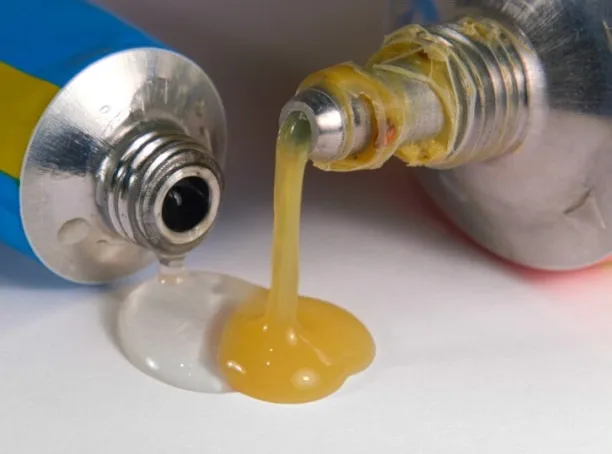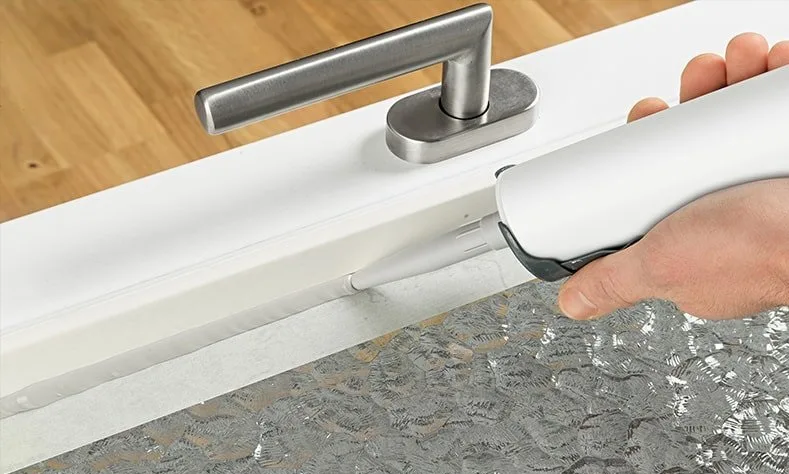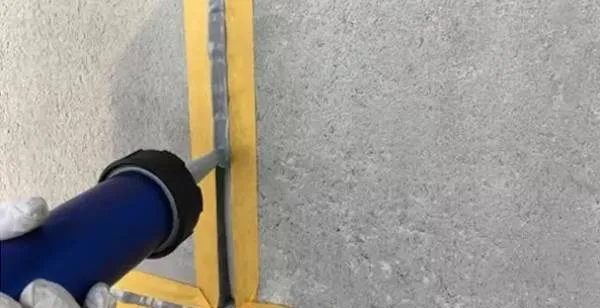Adhesives and sealants are versatile materials used in various applications across numerous industries. They are used to bond and seal a variety of materials, including plastics, metals, ceramics, and glass, and are essential components in many manufacturing processes.
What is the Difference Between Adhesive and Sealant?
Adhesives are used to join two or more materials together by forming a strong bond between them. Conversely, sealants are applied to fill in gaps or joints, effectively preventing the passage of air or water.

When selecting an adhesive or sealant, it is important to consider the material’s properties and characteristics, including its bonding strength, curing duration, and resistance to temperature, chemicals, and ultraviolet light. Other factors to consider include, the method of application, the types of substrate materials involved in the bonding or sealing process, and the environmental conditions under which the material will be utilized.

Furthermore, the proper handling and storage of adhesives and sealants are essential to maintain their effectiveness and extend their shelf life. These products should be kept in a cool, dry environment, shielded from direct sunlight and heat sources. It is also advisable to store them in their original containers, ensuring they are tightly sealed when not in use.
Advantages of adhesives:
Versatility: The adhesive force ensures the binding of various materials, allowing for versatile applications of the chemical.
Simple application: These are generally applied mechanically. Consequently, the process proves to be highly economical. There is no need to allocate numerous resources for its execution. It can be performed manually with great ease.
Lower cost– The use of adhesives for joining substrates generally incurs a lower cost compared to mechanical methods.
Uniform stress distribution– Adhesives evenly distribute stress and provide a greater stress-bearing area.
Provides insulation– Adhesives offer protection against the conduction of electricity and the transfer of heat.

Advantages of sealants:
Consistency: Construction chemicals with high viscosity exhibit limited flow, particularly on vertical joints. In contrast, Low viscosity sealants have the ability to penetrate deep inside the material, allowing them to achieve a self–levelling effect.
Weather-resistance: High-quality construction chemicals are designed to withstand extreme temperature, moisture, and heat. ensuring that their performance and flexibility remain uncompromised.
Movement: The viscous construction chemicals are capable of reaching even the most inaccessible areas, ensuring a perfectly level surface.
Durability: When applied correctly, these construction chemicals last even longer than their expected life cycle.
Adhesion: The sealants have a strong adhesive force. So, the adhesion in sealants remains an important factor in the selection process.

Adhesives vs. Sealants
- Sealants are specifically formulated to fill the gaps between surfaces, effectively blocking the entry of elements such as dust, water, or dirt. In contrast, adhesives are primarily intended to bond two surfaces together, ensuring that they remain inseparable.
- Sealants possess reduced strength and exhibit significant elongation and flexibility, making them unsuitable for bonding materials. In contrast, adhesives are specifically designed to adhere two surfaces together through the process of adhesion.
- Sealants don’t always have the sticking power needed for long-term adhesion while adhesives often fail to cure effectively when applied to outdoor surfaces.
- Sealants have a paste-like consistency that enables them to effectively fill gaps between surfaces, and has low shrinkage after application. Adhesives are in liquid form which becomes solid after application to securely bond materials together.
- Adhesives provide a more rigid and durable appearance and texture compared to sealants, which tend to be weaker and significantly more flexible.
Factors to Evaluate When Choosing Between Adhesives and Sealants
There are a few essential factors to consider when it comes to selecting between sealants and adhesives. If a strong and enduring bond is necessary, an adhesive may be the most appropriate option. Conversely, if the objective is to seal gaps or cracks to form a barrier, a sealant might be the better choice. Additionally, one should consider environmental conditions, durability, curing time, and overall suitability when selecting between adhesives and sealants.
- Purpose :The primary purpose of adhesives is to bond materials together, providing strength, durability, and structural integrity. They are made to endure a wide range of forces and hold items in place. In contrast, sealants are employed to prevent the passage of liquids or other substances, seal joints and gaps, and fill voids. They are versatile and capable of accommodating changes in substrates.
- Chemical Composition: The suitability and properties of adhesives and sealants for particular applications are influenced by their chemical composition. Adhesives are available in various types, each exhibiting different levels of strength, durability, and curing times, including options such as epoxy, polyurethane, acrylic, silicone, and butyl rubber. Sealants, including latex, silicone, hybrid, polyurethane, and polysulfide, are frequently utilized due to their ability to withstand external conditions and provide long-lasting flexibility.
- Application : Adhesives and sealants possess a variety of characteristics, leading to distinct applications for each. The primary function of adhesives is to unite materials, creating strong and durable bonds; during the curing phase, they often require precise alignment and application of pressure. In contrast, sealants are designed to fill gaps and seal joints, providing a flexible barrier against contaminants such as water and air. Typically applied with a caulking gun, sealants maintain their flexibility after-drying to accommodate movement of the substrate. They are essential for weatherproofing, sealing joints, and filling gaps in both commercial and residential structures, plumbing systems, and various other applications. Conversely, adhesives are crucial for structural bonding in construction, automotive industries, and repair and maintenance tasks.
- Cost: The costs of adhesives and sealants vary based on several factors, including their chemical composition, intended use, and specific application. Although they typically come at a higher price, high-performance sealants and adhesives offer superior functionality, strength, and longevity.
- Quality: The quality assurance process for adhesives encompasses various factors, including tensile strength, durability, curing duration, and resistance to environmental stress testing. This comprehensive approach ensures the creation of strong, resilient, and enduring bonds. Similarly, the quality assurance for sealants emphasizes flexibility, adhesion to various substrates, and weather resistance, with rigorous testing for stretching and durability. While both adhesives and sealants are subjected to stringent evaluations, the criteria are fundamentally aligned with their distinct functional roles.
- Ventilation: Effective ventilation is important for dispersing potentially harmful vapors during the various applications and curing processes of adhesives and sealants. Adhesives, in particular, necessitatemore immediate and thorough ventilation due to their higher viscosity and rapid curing times, in contrast to sealants. To reduce health risks associated with VOC exposure and to ensure a safe working environment, it is essential that both types of materials receive sufficient ventilation.
- Storage And Handling: Adhesives require careful stirring and activation, which necessites particular handling and storage conditions to retain their efficacy. In contrast, sealants are capable of enduring various storage environments; however, they still require protection from extreme conditions to preserve their quality. Hence both substances demand precise maintenance and attention.
Applications of Adhesives
Adhesives have a very important role and have various uses in the construction industry. It has a very wide market and a number of applications.
- It is used in the adhesion of Ceramic Tiles.
- Used in Carpet laying.
- Counter top Lamination and fixing of laminates and veneers on furniture in the interiors.
- Adhesives are used as the bonding layer for floor fixing between the existing floor and the substrate.
- It is used in the fixing of Drywall Lamination
- It finds its use in HVAC e. Heating, Ventilation and Air Conditioning
- They are mixed in the cement used for Joints.
- They are very useful in Manufactured Housing or pre-fabricated housing.
- Fixing of Pre-finished Panels.
- Fixing of Vinyl or Resilient Flooring.
- It is used in the fixing of Roofing systems and Roof tiles.
- They are used in surface preparation and application of Wall Covering or Wall Papers.

Applications of Sealants
- Used in Joints that connect the veneers of brick, stone, concrete, or other materials
- It is used in Roofs to seal the gaps and joints on a roof
- They can be used for sealing windows, gaps, and all kinds of constructive joints, so they are an integral part of any façade.
- They are used for Structural Glazing
- It is used in Precast Concrete Panels and Slabs
- It is used in sanitary areas around bathtubs, showers or sinks, domestic kitchens, sealing of connection and expansion joints.
- Used in Filling holes and repair of cracks on walls.
- Used in Sealing interior and exterior connection joints

Conclusion
Adhesion chemicals possess unique compositions, attributes, and advantages that are markedly different from those of sealants, and their applications also differ considerably . Therefore, it is essential to thoroughly understand the distinct characteristics of both categories of construction chemicals.

